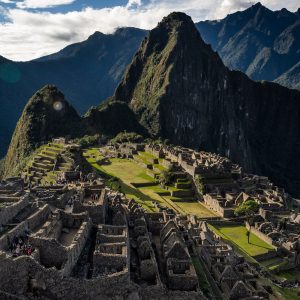Garcilaso de la Vega was born the “illegitimate but loved son of a Spanish conquistador and an Inca princess” was born in 1539 in the Viceroyalty of Peru, only about 5 years after the Spanish took advantage of the Inca civil war, and conquered the area. His peculiar situation allowed him access to both a Spanish education, and a good deal of exposure to the Inca culture of where he was raised. 
In Vega’s account, he describes the various musical stylings of the Indigenous people in 1602 Peruvian culture. He mainly focuses on panpipe players who were requested to play for the court. A panpipe is an instrument of four reeds, each, as Vega described it, resembling treble, tenor, contralto, and counter-bass voices. La flutes are also mentioned (flutes with 4-5 notes often played by shepherds), and both types of instruments are used for programmatic music.
It is interesting to note that Vega is, in some capacity, both Spaniard and Inca, but he still describes the music of “Native Americans” as an outsider. He writes with a similar stone cold curiosity as Francis Densmore in all her many accounts of Native American music centuries later, which proves both to dehumanize the people he describes without truly showing any sort of malice towards them either.
However, what makes this cold curiosity so interesting is that Densmore was hundreds of years removed from the beginnings of Native American displacement. However, Vega is writing from what is truly a new empire , less than a hundred years removed from the era in which Inca was its own empire, and a well-governed, well-documented one at that (Britannica). Considering the fact that the Inca Empire was just that, an empire, makes it even more curious that Vega would consider them “Native Americans” since they held a similar governing body to Spain.
, less than a hundred years removed from the era in which Inca was its own empire, and a well-governed, well-documented one at that (Britannica). Considering the fact that the Inca Empire was just that, an empire, makes it even more curious that Vega would consider them “Native Americans” since they held a similar governing body to Spain.
In a way, this account could also be seen through a similar lens to Eileen Southern’s newspaper clippings of advertisements for slaves in early American newspapers. It is almost as if the musical abilities of these people who are considered to be “less than” make them more valuable, both literally and figuratively in a certain sense, where either the slaveholder or the court is slightly more reverent of servants with musical abilities. Obviously, we must address this idea with the caveat that the curiosity of the colonist as it pertains to the indigenous person or slave, does not in any way make their treatment of these people less egregious.
Works Cited:
Britannica, The Editors of Encyclopaedia. “Inca”. Encyclopedia Britannica, 26 Aug. 2022, https://www.britannica.com/topic/Inca. Accessed 3 October 2022.
Densmore, F. (1929). Pawnee music. United States Government Printing Office.
“Garcilaso De La Vega: Description of Inca Music (1609).” The American Mosaic: The Latino American Experience, ABC-CLIO, 2022, latinoamerican2.abc-clio.com/Search/Display/1541276. Accessed 3 Oct. 2022.
Southern, E. (2006). Chapter 2: The Colonial Era. In The music of Black Americans: A history (Third Edition, pp. 25–27). essay, W. W. Norton & Company.
